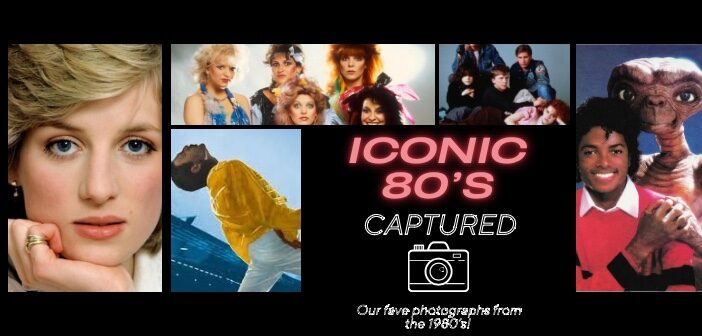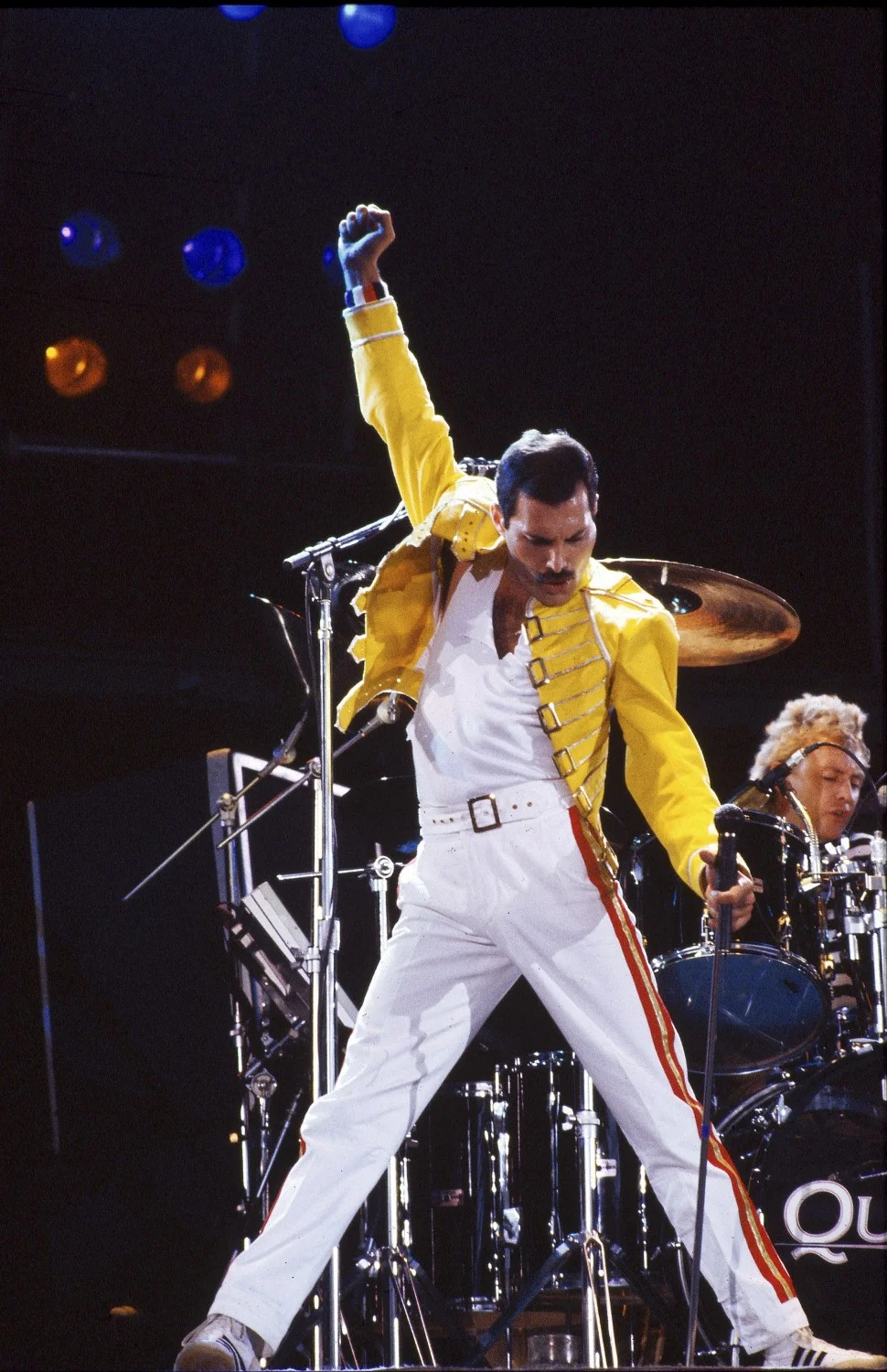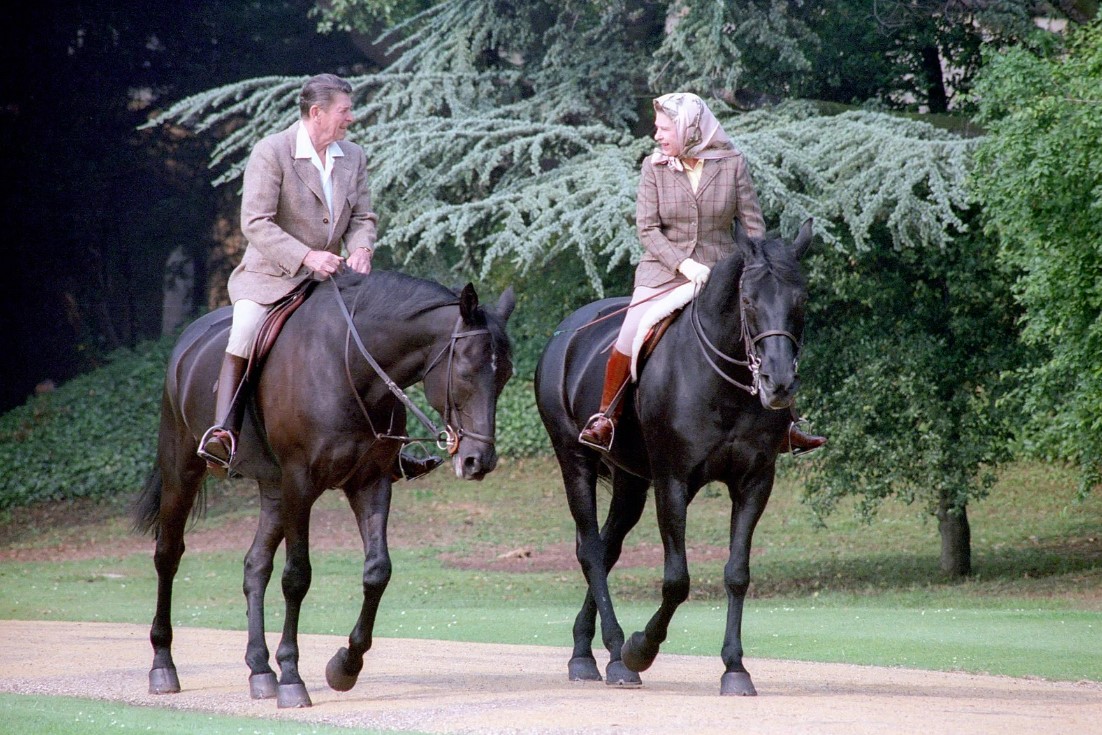The 1980s served us some truly iconic moments, artistic movements and world-shaking events. Amazingly, we are lucky enough to be able to observe some of these moments captured, frozen in time, forever more. It is only right then, we discuss some of our favourite captured moments from the 80s, a deep dive into some truly iconic photography from a memorable decade.
‘The Breakfast Club’ Poster
John Hughes’ The Breakfast Club is my favourite film of all time, so it is only natural that I would consider its famous poster to be a truly iconic eighties photograph. As simple as the photograph is, it highlights immediately the film’s core plot, the differences between the five main characters.
The photograph features the five actors in the outfits that their characters wear in the film, with this hinting towards the stereotypical cliques that they belong to at school. Andrew, a jock, is wearing a letterman jacket, for example. Aside from capturing their differences through their clothing, the poses of the actors reflect this, also. Claire, a popular, wealthy student, is laying at the forefront of the group, and is certainly the character that I notice first when looking at the poster. John Bender, the film’s ‘criminal’, meanwhile, is sitting at the back, posing with a raised fist, covered with a black, leather glove.
Although the film portrays the students’ stereotypes negatively, and as something they wish they could escape from, the poster is, undeniably, an iconic symbol of the eighties. By placing all of the students closely together, whilst wearing clothing and posing in ways that represent their respective styles and cliques, the poster represents a coming together of people who lead very different lives, at home and at school. It is a perfect representation of what the film is about, and is a large part of the film’s continuing popularity and enduring legacy.
By Mollie Potter
Freddie Mercury at Wembley Stadium
When considering iconic photography in the 1980s, it would truly be a crime not to mention, firstly, the icon that is Freddie Mercury, but also the infamous photographs seen of him. Naturally then, this triumphant image of Freddie at Wembley Stadium in 1986 is nothing short of awe-inspiring. The eye-catching spatter of yellow illuminates the image, his iconic army jacket becoming a centre piece of Mercury’s incredibly unique fashion. This, in contrast with the all-white aesthetic fulfilling the rest of his attire makes Freddie not only the centre-piece of this photograph, but bold and unmissable too- a powerful artist, clad in his expressionist armour, relishing in the moment. This photograph is memorable in its power, screaming, ‘look at me, look at this musical legend in his absolute prime.’ This photograph alone, gives you the feeling, the idea, of how it must have felt to attend the performance of a lifetime.
The context of this photograph then, adds another layer entirely. Although it is not known exactly when Mercury became aware of having contracted the AID’s virus- he sadly passed away just five years after his performance at Wembley Stadium. This image becomes more of the iconography it already is visually; a queer man, triumphant, raising his fist unafraid in a largely unaccepting society. Standing true in solidarity, flourishing in an flamboyant identity that left not just a lasting legacy, but an epic one. This photograph, knowing what we know now, contends with prejudiced misconceptions, and directly contrasts the discriminations the LGBTQ+ community, as well as HIV sufferers, face then and today. For these reasons, and the undeniable aesthetics of the photograph, this is arguably the most iconic, and my personal favourite image taken in the 1980s.
By Emily Poole
President Reagan and Queen Elizabeth II Horseback Riding
Ronald Reagan was one of the most prominent politicians of the 1980s as the Cold War neared its end during his presidency. This photo is one of many taken by the press pack in 1982 when the 40th President of the United States was hosted by the Queen at Windsor Castle. The Reagans were actually the first President and First Lady to be hosted by the monarch for dinner at Windsor with the actor-turned-politician writing in his diary that the event was ‘a fairy tale experience’.
This photo is notable for its context more so than its actual composition, although it is a pretty balanced photograph with the two figures on horseback complimenting each other. They are relaxed and conversational rather than stiff and formal in the scene captured, as such cementing a friendly moment amidst a frosty political climate. The British government, headed by Margaret Thatcher , still in her first term of office, was keen to secure American support over the Falklands War. There were also concerns as to the spread of communism in Argentina and other parts of South America. The politics of the Thatcher-Reagan era were beginning to take shape.
The invitation to Windsor Castle, however, was a personal request from the Queen, not a suggestion on behalf of the British government. It was the first personal invitation to a president from a British monarch since 1919, when Elizabeth II’s grandfather was on the throne. The activity captured in the photographs is rather telling as to the more personal nature of the late Queen’s diplomacy. Horse riding was her majesty’s lifelong passion and not necessarily something Mrs Thatcher was particularly known for. The Queen and President genuinely got along and were able to talk openly as seen in the photograph.
If you asked someone unaware of the identities of the two riders, they may simply guess that it is just a photograph of two riding companions and not necessarily two heads of state. A testament to how much President Reagan enjoyed riding with the Queen, he later invited her to his ranch in Santa Barbara so they could repeat the experience.
The photo is a charming one of two icons of the 80s, from different countries, with different public personas spending time together in a surprisingly informal scene.
By Susanna Robertson-Sheath
Princess Diana and ‘The Black Sheep’ Sweater
Iconic photography in the 1980s certainly lays its foundations with that of the beautiful Princess Diana. As such, this modest photograph of a young Diana in 1981, donning an eye-catching red ‘black sheep’ patterned sweater, is certainly a memorable one. Although, on the surface, it appears as a simple photograph of Diana at Windsor Polo; it gives us insight into multiple ideas. Firstly, an introduction to Diana’s impeccable fashion sense and more-than-memorable looks throughout her life (from the iconic ‘revenge dress’ to her lovely casual chic looks). And secondly, perhaps, a hint at the hidden emotions a young woman faced with the huge and prying eyes of the British media, and the demands of the institution. Diana, herself, feeling as if she is the ‘black sheep’ on her ever-so-lovely patterned sweater. In this sense, this simple photograph of a casual Diana, becomes something of heart-ache, something that simply means more. A reminder, even today, one never truly knows what someone thoughts and feelings are. What they might be going through.
The bright reds of the sweater, and the bold pattern truly allows it to be the centrepiece of the photograph; a style of clothing that has certainly re-emerged in fashion today. In fact, Lady Diana was known to wear this item several times after this initial infamous photograph. A tongue-in-cheek reference to her unashamed nonconformity. In this way, this photograph reveals to us so much more than just a simple photo of Diana in casual dress. It truly enraptures the energy, the playfulness, and the kind beauty ‘the peoples princess’ will forever be renowned for.
By Emily Poole







